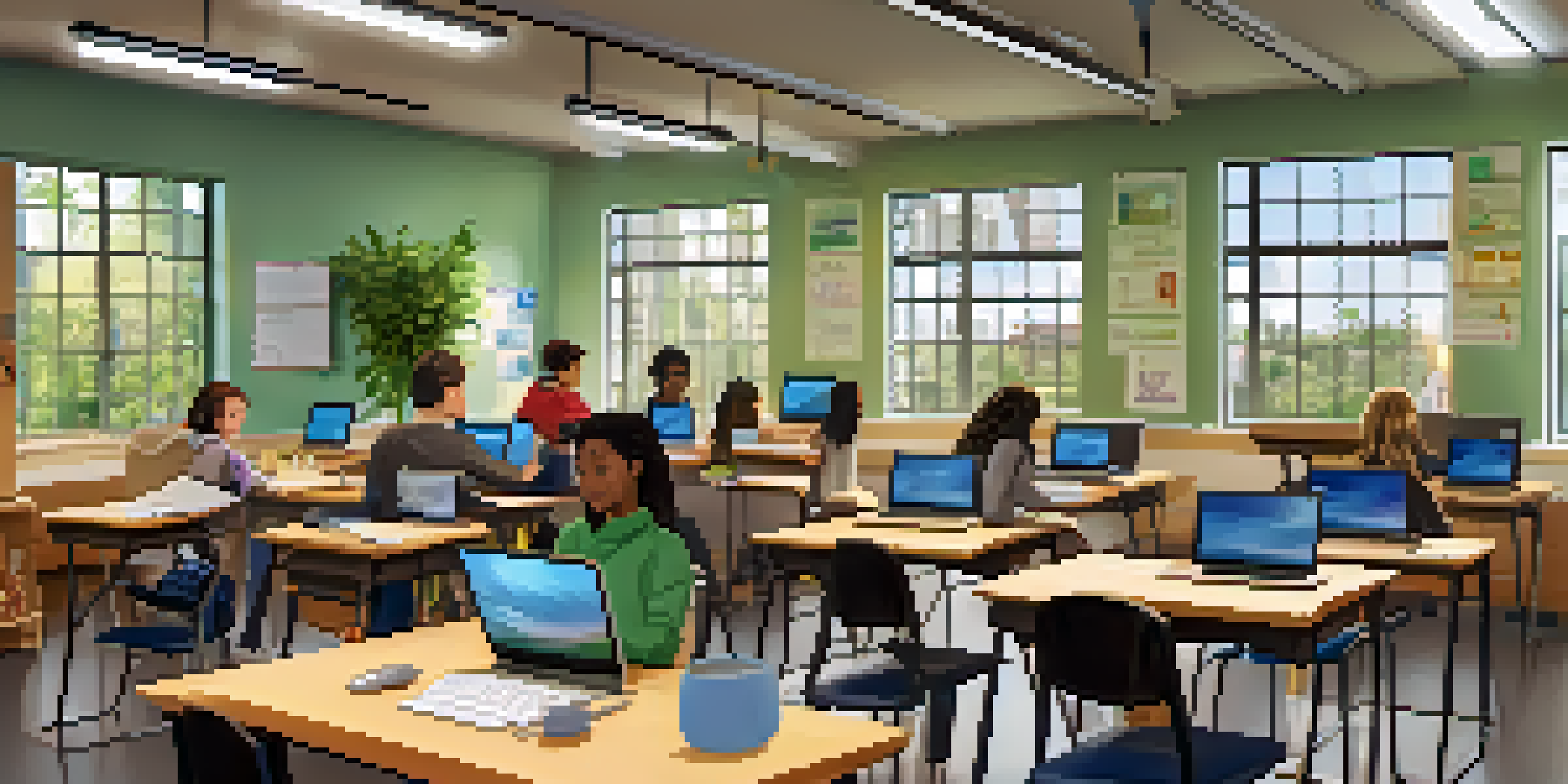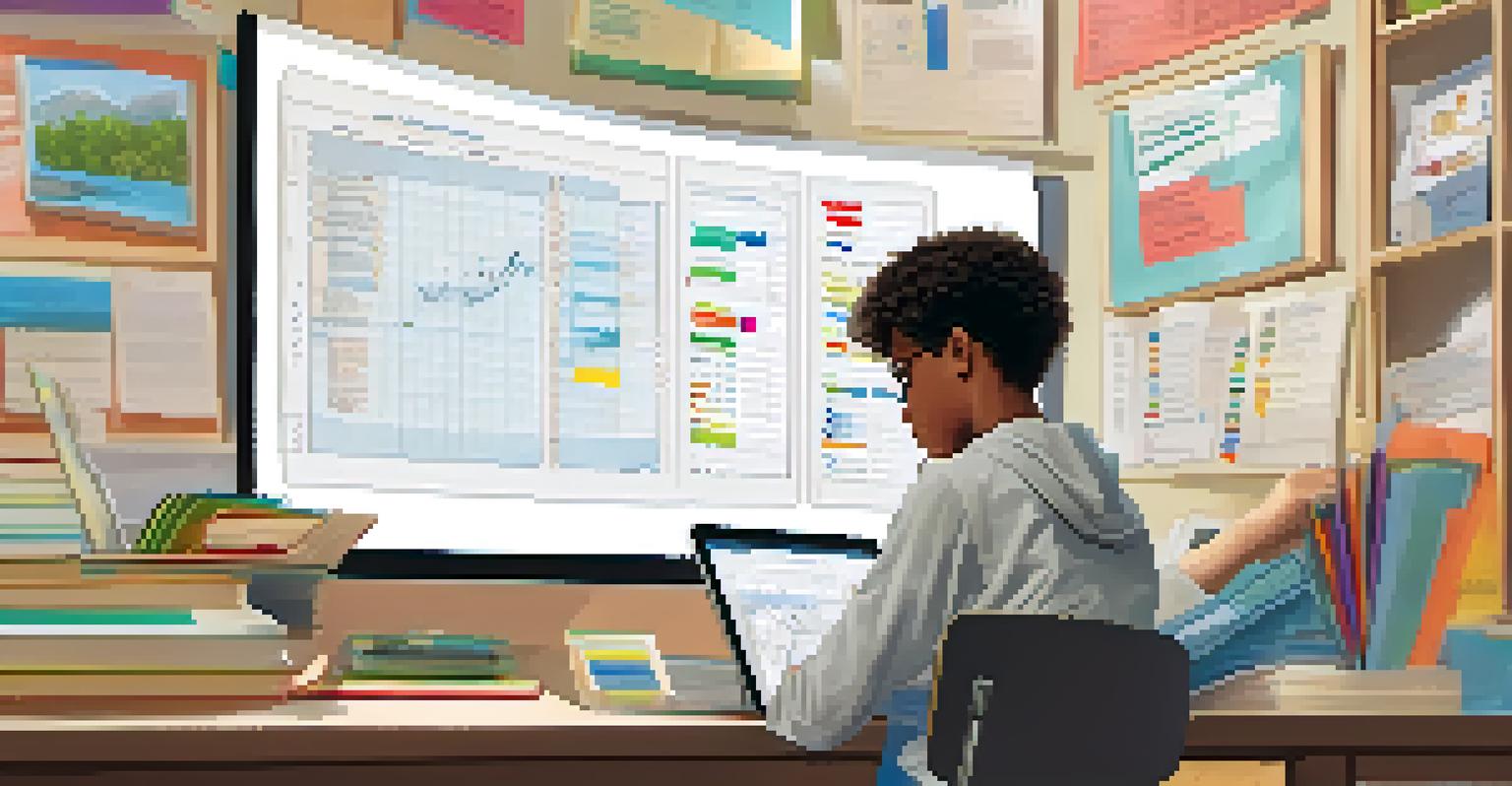Understanding the Role of Feedback in Blended Learning

Defining Blended Learning: A Modern Educational Approach
Blended learning combines traditional face-to-face classroom methods with online digital resources. This approach allows for greater flexibility and accessibility, catering to diverse learning styles. Think of it as a hybrid vehicle, using both gasoline and electric power to maximize efficiency. By integrating technology into education, blended learning creates a rich tapestry of learning opportunities for students.
Feedback is the breakfast of champions.
In a blended learning environment, students can learn at their own pace, revisiting online materials as needed. This self-directed component fosters independence, empowering learners to take charge of their education. As a result, students often feel more engaged and motivated to explore subjects that pique their interest.
However, the success of blended learning hinges on the effectiveness of feedback. Just like a GPS guiding a traveler, constructive feedback helps students navigate their learning journey, ensuring they stay on the right path.
The Importance of Feedback in Learning Processes
Feedback is a crucial component of any educational experience, serving as a bridge between students and instructors. It provides a roadmap for improvement, highlighting strengths and pinpointing areas that need development. Without it, students can feel lost, much like a ship adrift at sea, unsure of where to steer.

In blended learning, feedback can take various forms, from online quizzes to peer reviews and instructor comments. This variety allows for immediate responses and encourages a continuous dialogue between learners and educators. By receiving timely feedback, students can make adjustments to their learning strategies, enhancing their overall comprehension.
Blended Learning Enhances Flexibility
Blended learning merges traditional methods with digital resources, allowing students to learn at their own pace and catering to diverse learning styles.
Moreover, feedback fosters a growth mindset, encouraging students to view challenges as opportunities for growth. When students understand that constructive criticism is not a personal attack but rather a tool for improvement, they are more likely to embrace it and thrive.
Types of Feedback: Formative vs. Summative
Feedback can generally be categorized into formative and summative types, each serving a unique purpose in the learning process. Formative feedback is ongoing and occurs during the learning experience, allowing students to make real-time adjustments. Picture a coach providing tips during practice; this immediate guidance helps athletes refine their skills before the big game.
Education is not the filling of a pail, but the lighting of a fire.
On the other hand, summative feedback is typically provided at the end of a learning unit or course, summarizing overall performance. Think of this as a final report card, giving students a snapshot of their achievements and areas to focus on in the future. While both types are essential, formative feedback often has a more significant impact on student learning.
In blended learning, utilizing both formative and summative feedback can create a comprehensive learning experience. This combination ensures that students receive guidance throughout their journey while also having a clear understanding of their overall progress.
Creating a Feedback-Rich Environment in Blended Learning
To maximize the benefits of feedback, it's essential to cultivate a feedback-rich environment in blended learning settings. This involves encouraging open communication between students and instructors, fostering a culture of collaboration and support. Just like a thriving garden, a feedback-rich environment allows students to grow and flourish together.
Providing opportunities for peer feedback is another effective strategy. When students share insights and constructive critiques with one another, they learn to value different perspectives and approaches. This collaborative effort not only enhances their understanding but also builds a sense of community within the learning space.
Feedback Fuels Student Growth
Effective feedback, whether formative or summative, provides critical guidance that helps students navigate their learning journey and fosters a growth mindset.
Lastly, leveraging technology can facilitate feedback exchanges in blended learning. Online platforms allow for instant communication, enabling students to ask questions and receive guidance at any time. By embracing these tools, educators can create a dynamic learning environment that prioritizes feedback.
The Role of Self-Assessment in Feedback
Self-assessment is a powerful tool that complements feedback, encouraging students to reflect on their own learning journey. By evaluating their understanding and performance, learners can identify strengths and areas for improvement. It's much like a personal fitness tracker, helping individuals monitor their progress and set achievable goals.
In blended learning, incorporating self-assessment techniques allows students to take ownership of their education. They can set personal benchmarks and track their growth over time, leading to a greater sense of accountability. This process not only enhances their learning experience but also builds essential skills for the future.
Moreover, when students engage in self-assessment, they become more receptive to external feedback. With a clearer understanding of their own capabilities, they can better appreciate the insights provided by instructors and peers, leading to a more productive learning cycle.
Using Technology to Enhance Feedback Delivery
Technology plays a vital role in how feedback is delivered in blended learning environments. Online platforms enable educators to provide immediate and personalized feedback, making the learning experience more engaging and interactive. Imagine receiving a voice message from your teacher instead of just written comments; it adds a personal touch that can make feedback feel more meaningful.
Tools like discussion boards and collaborative documents allow students to ask questions and receive real-time responses from their peers and instructors. This instant connection helps clarify doubts and fosters a supportive learning community. By creating a space for dialogue, technology enhances the feedback process, making it more dynamic and effective.
Tech-Driven Feedback Delivery
Utilizing technology in blended learning enhances the feedback process, enabling immediate, personalized responses that create a more engaging learning experience.
Additionally, data analytics can offer valuable insights into student performance, helping educators tailor feedback to individual needs. By analyzing patterns and trends, instructors can identify areas where students struggle and provide targeted support. This data-driven approach ensures that feedback is not only timely but also relevant.
The Future of Feedback in Blended Learning
As education continues to evolve, the role of feedback in blended learning will undoubtedly become more prominent. With advancements in technology and teaching methodologies, educators are finding innovative ways to enhance the feedback process. This evolution will likely lead to more personalized and meaningful feedback experiences for students.
Moreover, as the importance of social-emotional learning gains recognition, feedback will increasingly focus on fostering resilience and growth. Educators will need to prioritize not just academic performance but also students' emotional well-being. This holistic approach will create a nurturing environment where feedback serves as a catalyst for personal development.

Ultimately, the future of feedback in blended learning is bright. By embracing change and continually refining feedback practices, educators can empower students to thrive in their learning journeys, paving the way for a new generation of lifelong learners.